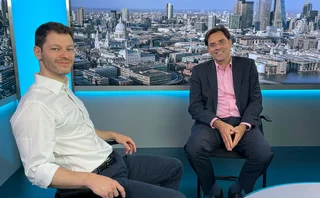

Market-making in spot precious metals
CLICK HERE TO DOWNLOAD THE PDF
The primary challenge of market-making in spot precious metals is navigating the liquidity provided by futures contracts. The exchange-for-physical (EFP) spread, which is the price difference between the futures and the spot, plays a pivotal role and exhibits multiple modes of relaxation corresponding to the diverse trading horizons of market participants. Alexander Barzykin, Philippe Bergault and Olivier Guéant model the EFP spread using a nested Ornstein-Uhlenbeck
Only users who have a paid subscription or are part of a corporate subscription are able to print or copy content.
To access these options, along with all other subscription benefits, please contact info@risk.net or view our subscription options here: http://subscriptions.risk.net/subscribe
You are currently unable to print this content. Please contact info@risk.net to find out more.
You are currently unable to copy this content. Please contact info@risk.net to find out more.
Copyright Infopro Digital Limited. All rights reserved.
As outlined in our terms and conditions, https://www.infopro-digital.com/terms-and-conditions/subscriptions/ (point 2.4), printing is limited to a single copy.
If you would like to purchase additional rights please email info@risk.net
Copyright Infopro Digital Limited. All rights reserved.
You may share this content using our article tools. As outlined in our terms and conditions, https://www.infopro-digital.com/terms-and-conditions/subscriptions/ (clause 2.4), an Authorised User may only make one copy of the materials for their own personal use. You must also comply with the restrictions in clause 2.5.
If you would like to purchase additional rights please email info@risk.net
More on Cutting Edge
Choosing trading strategies using importance sampling
The sampling technique is more efficient than A-B testing at comparing decision rules
A comparison of FX fixing methodologies
FX fixing outcomes are mostly driven by length of calculation window
Quantum cognition machine learning: financial forecasting
A new paradigm for training machine learning algorithms based on quantum cognition is presented
Backtesting correlated quantities
A technique to decorrelate samples and reach higher discriminatory power is presented
A hard exit threshold strategy for market-makers
A closed-form solution to derive optimal stop-loss and profit-taking levels is presented
Pricing share buy-backs: an alternative to optimal control
A new method applies optimised heuristic strategies to maximise share buy-back contracts’ value
CVA sensitivities, hedging and risk
A probabilistic machine learning approach to CVA calculations is proposed
Podcast: Alvaro Cartea on collusion within trading algos
Oxford-Man Institute director worries ML-based trading could have anti-competitive effects







